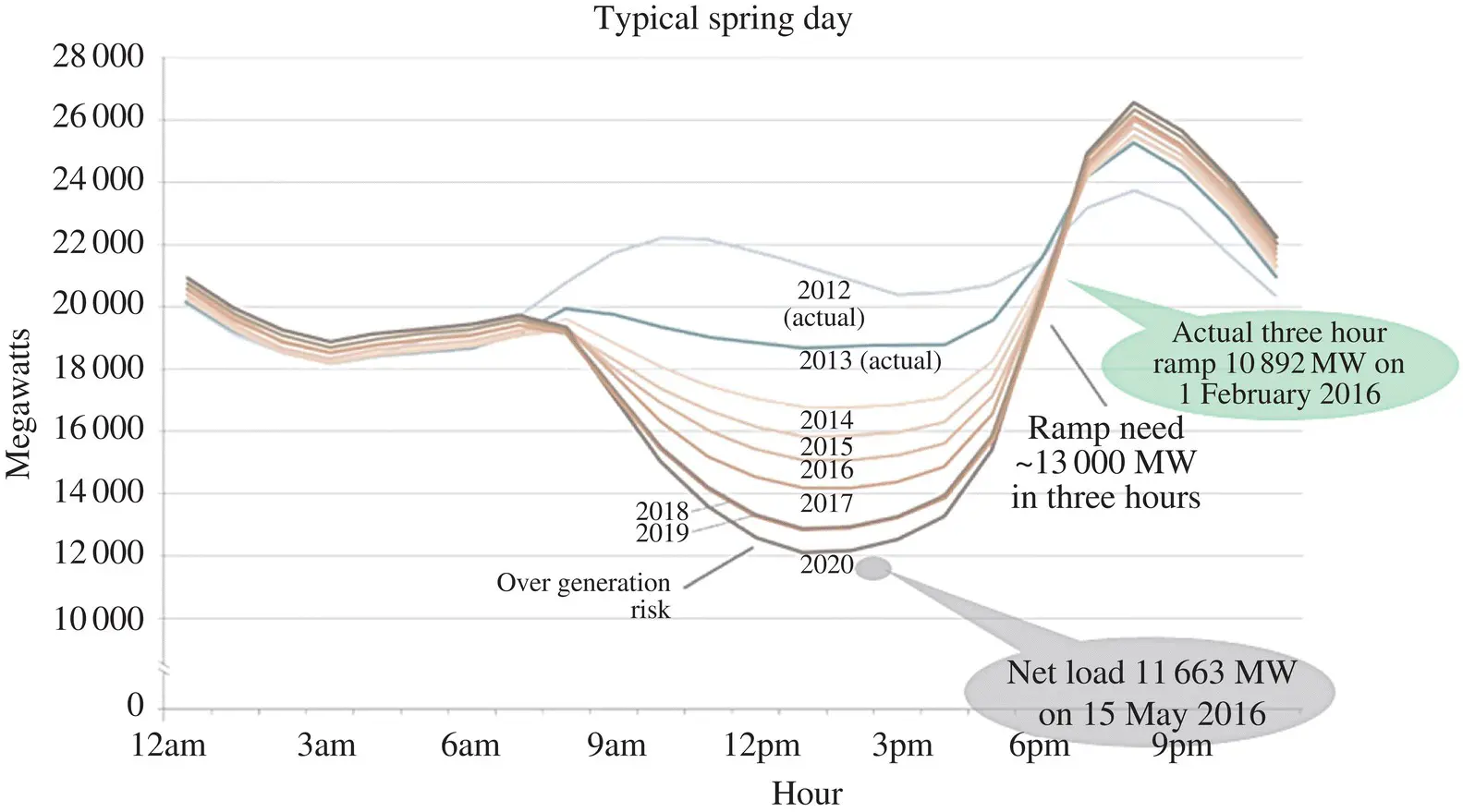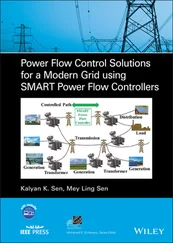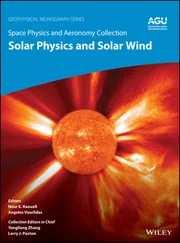Rajiv K. Varma - Smart Solar PV Inverters with Advanced Grid Support Functionalities
Здесь есть возможность читать онлайн «Rajiv K. Varma - Smart Solar PV Inverters with Advanced Grid Support Functionalities» — ознакомительный отрывок электронной книги совершенно бесплатно, а после прочтения отрывка купить полную версию. В некоторых случаях можно слушать аудио, скачать через торрент в формате fb2 и присутствует краткое содержание. Жанр: unrecognised, на английском языке. Описание произведения, (предисловие) а так же отзывы посетителей доступны на портале библиотеки ЛибКат.
- Название:Smart Solar PV Inverters with Advanced Grid Support Functionalities
- Автор:
- Жанр:
- Год:неизвестен
- ISBN:нет данных
- Рейтинг книги:3 / 5. Голосов: 1
-
Избранное:Добавить в избранное
- Отзывы:
-
Ваша оценка:
- 60
- 1
- 2
- 3
- 4
- 5
Smart Solar PV Inverters with Advanced Grid Support Functionalities: краткое содержание, описание и аннотация
Предлагаем к чтению аннотацию, описание, краткое содержание или предисловие (зависит от того, что написал сам автор книги «Smart Solar PV Inverters with Advanced Grid Support Functionalities»). Если вы не нашли необходимую информацию о книге — напишите в комментариях, мы постараемся отыскать её.
Smart Solar PV Inverters with Advanced Grid Support Functionalities
Smart Solar PV Inverters with Advanced Grid Support Functionalities’
Smart Solar PV Inverters with Advanced Grid Support Functionalities — читать онлайн ознакомительный отрывок
Ниже представлен текст книги, разбитый по страницам. Система сохранения места последней прочитанной страницы, позволяет с удобством читать онлайн бесплатно книгу «Smart Solar PV Inverters with Advanced Grid Support Functionalities», без необходимости каждый раз заново искать на чём Вы остановились. Поставьте закладку, и сможете в любой момент перейти на страницу, на которой закончили чтение.
Интервал:
Закладка:
1.2.6 Decrease in Voltage Support Capability of Power Systems
High proliferation of utility‐scale solar PV systems and rooftop solar PV systems cause displacement of conventional fossil‐fuel‐based synchronous generators which have voltage control capabilities through their automatic voltage regulators. This results in a decrease of reactive power support for voltage control in the grid. This requires installation of additional voltage support equipment such as switched capacitors, SVC, STATCOM, or synchronous condenser on transmission and distribution systems, as needed.
1.2.7 Interaction with Conventional Voltage Regulation Equipment
Intermittency and variability in power generated by the DERs result in continuous voltage variations in the voltage at the PCC, as described above. The utilities typically install voltage‐regulating equipment in their networks such as line voltage regulators, load tap changers, and capacitor banks. These equipment constantly monitor the voltages in the lines to which they are connected and take appropriate control action, e.g. capacitor switching to keep the voltages within acceptable limits. Unpredictable and rapid variations caused by power generation from DERs cause more frequent operation of such installed voltage control equipment than what they are designed for [19, 27]. This leads to a potential reduction in their operating life. The operating time of these voltage control equipment is typically 30–90 seconds [21], hence step‐voltage control operations may occur in intervals of one to two minutes on the feeder. The line voltage regulators and LTCs often employ line drop compensation for voltage control. Such a voltage regulation technique is dependent upon the actual line current. DERs modify this line current due to their power generation and may adversely impact the voltage regulation process [27]. Frequent switching of capacitor banks also causes changes in the reactive power flow in the lines leading to unintended voltage variations and increased line losses.
1.2.8 Variability of Power Output
A significant adverse impact of solar PV systems is that their outputs are variable, and hence they are not dispatchable as conventional generators. Their power output can be frequently and substantially impacted by environmental conditions such as cloud coverage. In addition, an increasing amount of solar PV generation (e.g. rooftop) is not observable by the system operator, which creates challenges in maintaining system reliability with such large intermittent PV generation resources.
Some techniques for predicting and addressing the variability are presented below.
Techniques are continuously being developed to accurately predict the environmental conditions for both wind and PV‐based IBRs and DERs in very short intervals of time [50]. Solar PV power forecast reduces the uncertainty of the intermittency and variability of such power generation. This helps system operators to commit and decommit synchronous generators to handle situations of high and low power output from these renewable energy systems. The forecasts are also of great value in lowering the amount of operating reserves required for the system, thereby reducing the overall system operating cost.
The variability from solar power arises due to cloud passage. Short‐term cloud forecasting can be done by sky imaging which can predict approaching clouds. Forecasting in the time frame of next few hours can be based on satellite imagery of clouds. Longer‐term forecasting can be done on the basis of weather models to determine the formation of clouds [50].
Despite the gradual emergence of accurate forecasting, the power system must still respond and adapt to the changing power output from such IBRs and DERs so as not to impact system reliability and continuity of the power supply to customers.
1.2.9 Balancing Supply and Demand
Increasing solar generation reduces the net load especially during periods of relatively low loads and high generation such as in Spring. CAISO has produced a plot of “net load” which is the difference between forecasted load and expected electricity production from variable generation sources such as solar PV systems. In certain times of the year, these curves produce a “belly” like appearance in the mid‐afternoon that quickly ramps up to produce an “arch” similar to the neck of a duck – hence the popular industry given name “The Duck Chart” shown in Figure 1.13[51]. The more solar generation increases, the more the curve looks like the belly of a duck. This problem mainly occurs during springtime when the weather is sunny but still cool. At this time, solar generation is high but electricity demand is less as air‐conditioning loads are low [52].

Figure 1.13 California ISO (CAISO) Duck Chart.
Source: CAISO [52]. Licensed with permission from the California ISO. Any statements, conclusions, summaries, or other commentaries expressed herein do not reflect the opinions or endorsement of the California ISO.
This behavior of net load creates special problems for system operator to balance generation and load. As the sun sets and the solar generation reduces to zero, a significant net demand ramp (the arch of duck’s neck) is experienced by the system operator. It must, therefore, dispatch significant generation resource to meet the demand ramp. Further, as the net demand decreases in late evening, when a downward ramp is experienced the system operator must rapidly reduce or shut down the generation to offset the downward ramp.
Another major problem is the oversupply during midday which may lead to the system operator curtailing solar power generation thus reducing its economic and environmental benefits. Several mitigative measures which minimize the risk of overgeneration are proposed in [51].
1.2.10 Changes in Active Power Flow in Feeders
The active power generated by solar PV systems can modify the loading levels on the connected feeders [21]. They can partially or completely offset the existing loads on distribution feeders, which results in a reduced power import on the feeder from the grid. They can also increase power flow in certain segments of a distribution feeder causing overload conditions. Presently employed voltage control devices which have been optimized for their size, location, and performance based on the existing loading patterns will no longer provide the same voltage regulation performance as originally planned [26]. These need to be re‐optimized.
It is further important to examine if the feeder sections connecting the substation to DERs have enough power carrying capacity and also whether the intervening switchgear have adequate ratings to accommodate this additional DER power.
Reconductoring may be needed to allow the power flow from solar PV systems. In some cases, when large solar PV systems are to be connected, a dedicated feeder may be needed to avoid the adverse impacts of a conventional solar PV connection [21]. Such a dedicated feeder without any loads can be directly connected to the substation. It may be noted that such reconductoring or network upgrades are quite expensive and time consuming to implement.
1.2.11 Change in Reactive Power Flow in Feeders
Voltage variations due to active power generation by solar PV systems coupled with operation of voltage regulators and switching of capacitor banks leads to change in reactive power flow in the lines [53]. For instance, if a capacitor is switched off, reactive power earlier being supplied by the capacitor is no longer available and needs to be imported from neighboring lines or utilities. This may also have financial impacts on the distribution utilities that have a high import component of power from neighboring utilities.
Читать дальшеИнтервал:
Закладка:
Похожие книги на «Smart Solar PV Inverters with Advanced Grid Support Functionalities»
Представляем Вашему вниманию похожие книги на «Smart Solar PV Inverters with Advanced Grid Support Functionalities» списком для выбора. Мы отобрали схожую по названию и смыслу литературу в надежде предоставить читателям больше вариантов отыскать новые, интересные, ещё непрочитанные произведения.
Обсуждение, отзывы о книге «Smart Solar PV Inverters with Advanced Grid Support Functionalities» и просто собственные мнения читателей. Оставьте ваши комментарии, напишите, что Вы думаете о произведении, его смысле или главных героях. Укажите что конкретно понравилось, а что нет, и почему Вы так считаете.












